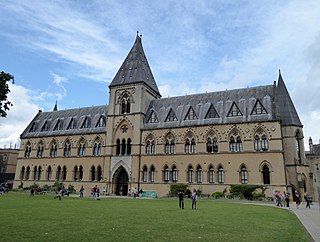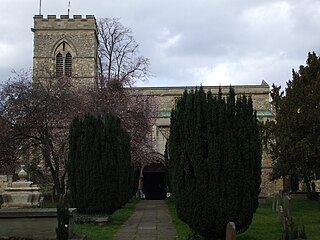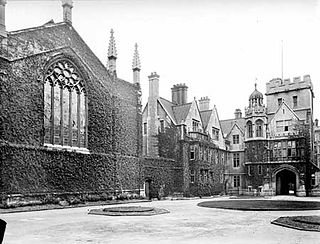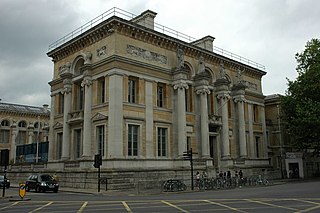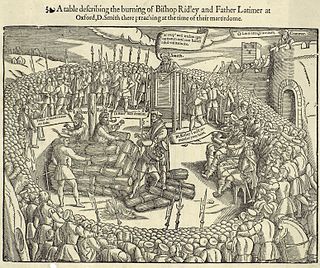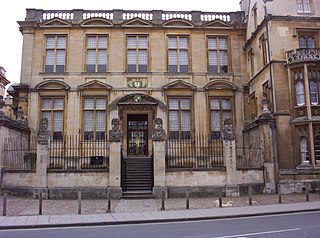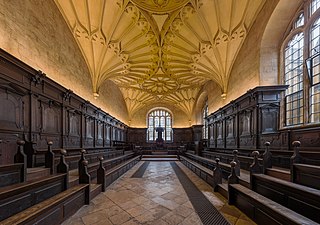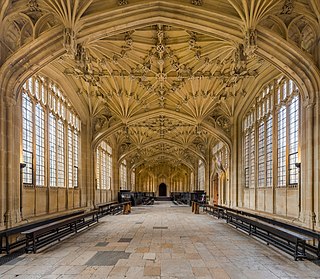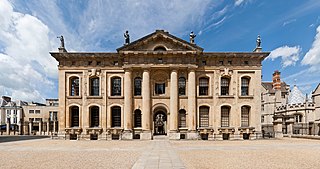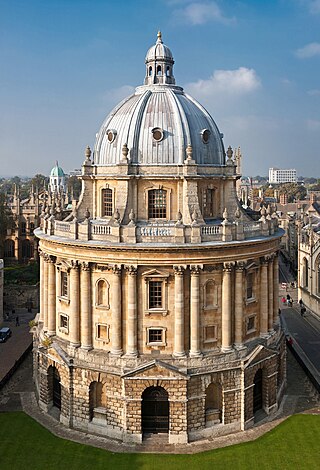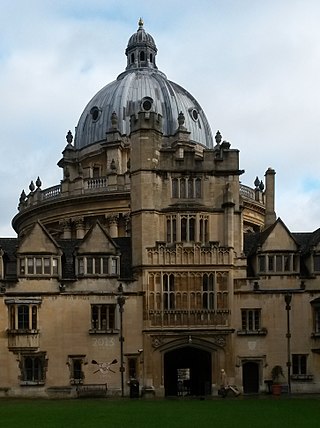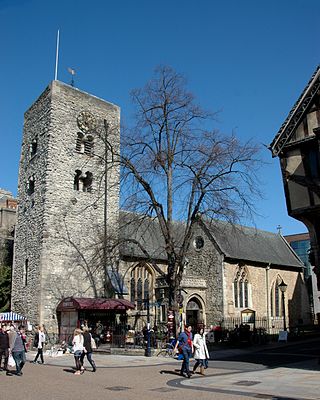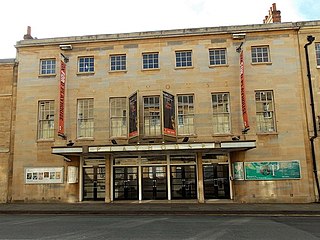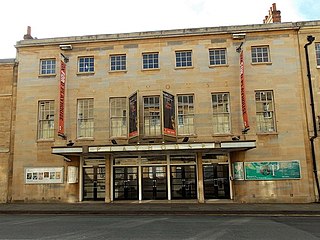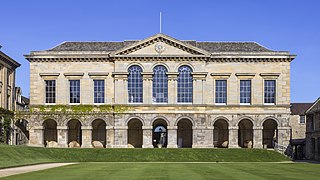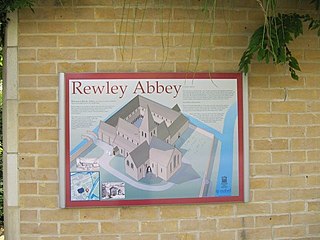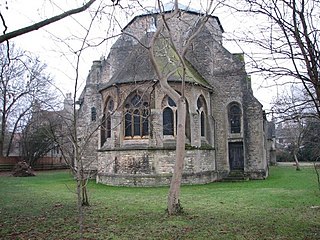Self-guided Sightseeing Tour #3 in Oxford, United Kingdom
Legend
Tour Facts
6.4 km
65 m
Experience Oxford in United Kingdom in a whole new way with our free self-guided sightseeing tour. This site not only offers you practical information and insider tips, but also a rich variety of activities and sights you shouldn't miss. Whether you love art and culture, want to explore historical sites or simply want to experience the vibrant atmosphere of a lively city - you'll find everything you need for your personal adventure here.
Activities in OxfordIndividual Sights in OxfordSight 1: Parson's Pleasure
Parson's Pleasure in the University Parks at Oxford, England, was a secluded area for male-only nude bathing on the River Cherwell. It was located next to the path on the way to Mesopotamia at the south-east corner of the Parks. The facility closed in 1991 and the area now forms part of the Parks.
Sight 2: Rhodes House
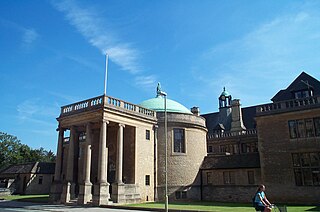
Rhodes House is a building part of the University of Oxford in England. It is located on South Parks Road in central Oxford, and was built in memory of Cecil Rhodes, an alumnus of the university and a major benefactor. It is listed Grade II* on the National Heritage List for England.
Sight 3: Oxford University Museum of Natural History
Get Ticket*The Oxford University Museum of Natural History (OUMNH) is a museum displaying many of the University of Oxford's natural history specimens, located on Parks Road in Oxford, England. It also contains a lecture theatre which is used by the university's chemistry, zoology and mathematics departments. The museum provides the only public access into the adjoining Pitt Rivers Museum.
Wikipedia: Oxford University Museum of Natural History (EN), Url
Sight 4: Pitt Rivers Museum
Get Ticket*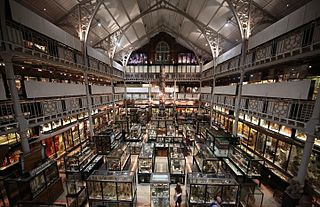
Pitt Rivers Museum is a museum displaying the archaeological and anthropological collections of the University of Oxford in England. The museum is located to the east of the Oxford University Museum of Natural History, and can only be accessed through that building.
Sight 5: St Giles' Church
St Giles' Church is a church in North Oxford, England. It is at the northern end of the wide thoroughfare of St Giles', at the point where it meets Woodstock Road and Banbury Road. It stands between where Little Clarendon Street joins Woodstock Road and Keble Road joins Banbury Road.
Sight 6: The Oxford Oratory

The Oxford Oratory Church of St Aloysius Gonzaga is the Catholic parish church for the centre of Oxford, England. It is located at 25 Woodstock Road, next to Somerville College. The church is served by the Congregation of the Oratory.
Sight 7: Chapel
Get Ticket*Somerville College Chapel is the chapel of Somerville College, Oxford. The chapel is unique among Oxford colleges because it has no religious affiliation - reflecting the non-sectarian foundation of the college as place for the higher education of women. It can be seen as both a manifestation of the aspirations of liberal Christianity in the interwar years, including the advancement of women and ecumenism, and of the contestation of the role of religion in higher education among elites in the same period.
Sight 8: Taylor Institution
The Taylor Institution is the Oxford University library dedicated to the study of the languages of Europe. Its building also includes lecture rooms used by the Faculty of Medieval and Modern Languages, University of Oxford. Since 1889, an Annual Lecture on a subject of Foreign Literature has been given at the Taylorian Institution.
Sight 9: Martyrs' Memorial
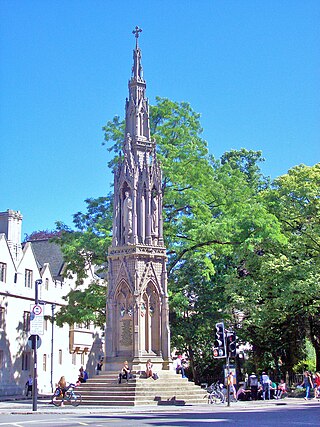
The Martyrs' Memorial is a stone monument positioned at the intersection of St Giles', Magdalen Street and Beaumont Street, to the west of Balliol College, Oxford, England. It commemorates the 16th-century Oxford Martyrs.
Sight 10: St Mary Magdalen
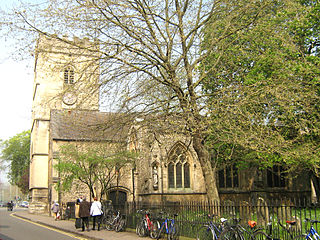
St Mary Magdalen is a Church of England parish church in Magdalen Street, Oxford, England, dedicated to Jesus' companion Mary Magdalene. It is one of the city's ancient parish churches and is a Grade I listed building.
Sight 11: Site of the Burning of the Oxford Martyrs
The Oxford Martyrs were Protestants tried for heresy in 1555 and burnt at the stake in Oxford, England, for their religious beliefs and teachings, during the Marian persecution in England.
Sight 12: Museum of the History of Science
The History of Science Museum in Broad Street, Oxford, England, holds a leading collection of scientific instruments from Middle Ages to the 19th century. The museum building is also known as the Old Ashmolean Building to distinguish it from the newer Ashmolean Museum building completed in 1894. The museum was built in 1683, and it is the world's oldest surviving purpose-built museum.
Wikipedia: History of Science Museum, Oxford (EN), Website, Twitter, Facebook, Instagram, Youtube
Sight 13: Sheldonian Theatre
Get Ticket*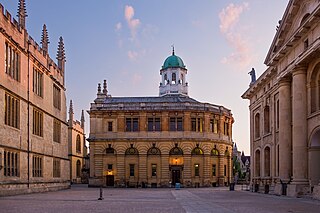
The Sheldonian Theatre, in the centre of Oxford, England, was built from 1664 to 1669 after a design by Christopher Wren for the University of Oxford. The building is named after Gilbert Sheldon, Warden of All Souls College and later chancellor of the University. Sheldon was the project's main financial backer. The theatre is used for music concerts, lectures and University ceremonies, but not for drama until 2015 when the Christ Church Dramatic Society staged a production of The Crucible by Arthur Miller.
Sight 14: Convocation House
Convocation House is the lower floor of the 1634–1637 westward addition to the University of Oxford's Bodleian Library and Divinity School in Oxford, England. It adjoins the Divinity School, which pre-dates it by just over two hundred years, and the Sheldonian Theatre, to its immediate north.
Sight 15: The Divinity School
Get Ticket*The Divinity School is a medieval building and room in the Perpendicular style in Oxford, England, part of the University of Oxford. Built between 1427 and 1483, it is the oldest surviving purpose-built building for university use, specifically for lectures, oral exams and discussions on theology. It is no longer used for this purpose, although Oxford does offer degrees in Theology and Religion taught by its Faculty of Theology and Religion.
Sight 16: Clarendon Building
The Clarendon Building is an early 18th-century neoclassical building of the University of Oxford. It is in Broad Street, Oxford, England, next to the Bodleian Library and the Sheldonian Theatre and near the centre of the city. It was built between 1711 and 1715 and is now a Grade I listed building.
Sight 17: Holywell Music Room
The Holywell Music Room is the city of Oxford's chamber music hall, situated on Holywell Street in the city centre, and is part of Wadham College. It is said to be the oldest purpose-built music room in Europe, and hence Britain's first concert hall.
Sight 18: The Bridge of Sighs
Get Ticket*Hertford Bridge, often called the Bridge of Sighs, is a skyway joining two parts of Hertford College over New College Lane in Oxford, England. Its distinctive design makes it a city landmark.
Sight 19: Radcliffe Camera
Get Ticket*The Radcliffe Camera is a building of the University of Oxford, England, designed by James Gibbs in a Baroque style and built in 1737–49 to house the Radcliffe Science Library. It is sited to the south of the Old Bodleian, north of the Church of St Mary the Virgin, and between Brasenose College to the west and All Souls College to the east. The Radcliffe Camera's circularity, its position in the heart of Oxford, and its separation from other buildings make it the focal point of the University of Oxford, and as such it is almost always included in shorthand visual representations of the university. The Radcliffe Camera is not open to the public.
Sight 20: Brasenose College
Get Ticket*Brasenose College (BNC) is one of the constituent colleges of the University of Oxford in the United Kingdom. It began as Brasenose Hall in the 13th century, before being founded as a college in 1509. The library and chapel were added in the mid-17th century and the new quadrangle in the late 19th and early 20th centuries.
Sight 21: Lincoln College
Get Ticket*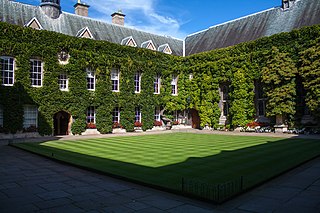
Lincoln College is one of the constituent colleges of the University of Oxford, situated on Turl Street in central Oxford. Lincoln was founded in 1427 by Richard Fleming, the then bishop of Lincoln.
Sight 22: St Michael at the Northgate
St Michael at the North Gate is a church in Cornmarket Street, at the junction with Ship Street, in central Oxford, England. The name derives from the church's location on the site of the north gate of Oxford when it was surrounded by a city wall.
Sight 23: New Theatre
Get Ticket*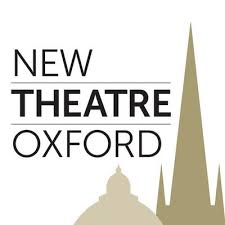
New Theatre Oxford is the main commercial theatre in Oxford, England. It has a capacity of 1,785 people; is on George Street, in the centre of the city; and puts on a wide variety of shows, including musical theatre, stand-up comedy, and concerts.
Sight 24: Burton Taylor Studio
The Oxford Playhouse is a theatre designed by Edward Maufe and F. G. M. Chancellor. It is situated in Beaumont Street, Oxford, opposite the Ashmolean Museum.
Sight 25: Oxford Playhouse
Get Ticket*The Oxford Playhouse is a theatre designed by Edward Maufe and F. G. M. Chancellor. It is situated in Beaumont Street, Oxford, opposite the Ashmolean Museum.
Sight 26: Worcester College
Worcester College is one of the constituent colleges of the University of Oxford in England. The college was founded in 1714 by the benefaction of Sir Thomas Cookes, 2nd Baronet (1648–1701) of Norgrove, Worcestershire, whose coat of arms was adopted by the college. Its predecessor, Gloucester College, had been an institution of learning on the same site since the late 13th century until the Dissolution of the Monasteries in 1539. Founded as a men's college, Worcester has been coeducational since 1979. The provost is David Isaac, CBE who took office on 1 July 2021.
Sight 27: Rewley Abbey
The Cistercian Abbey of Rewley was an abbey in Oxford, England. It was founded in the 13th century by Edmund, 2nd Earl of Cornwall. Edmund's father, Richard, 1st Earl of Cornwall, founder of Hailes Abbey, had intended to establish a college or chantry of three secular priests to pray for his soul, but his son Edmund substituted 'six Cistercian monks, having more confidence in them'. If this was the original plan, it was soon enlarged. In 1280 he offered the general chapter of the Cistercian order to found a college (studium) for Cistercians at Oxford, and the chapter accepted the offer, and decreed that the college should have the same privileges as the college of St. Bernard at Paris, and that it should be under the Abbot of Thame, as the other was under the Abbot of Clairvaux. The following year the chapter decreed 'out of due respect to the Earl of Cornwall' that the Abbot of Thame should be empowered to appoint an Abbot of his own choice for the house of study at Oxford, and that there should be a daily memory of the late Earl of Cornwall at Mass at the college (studium) of Oxford, according as the Abbot of the place shall ordain.
Sight 28: St Frideswide's Church
St Frideswide's Church is a Church of England church on the south side of the Botley Road in New Osney, west Oxford, England. The church is in a district originally part of the parish of St Thomas the Martyr.
Share
How likely are you to recommend us?
Disclaimer Please be aware of your surroundings and do not enter private property. We are not liable for any damages that occur during the tours.
GPX-Download For navigation apps and GPS devices you can download the tour as a GPX file.

